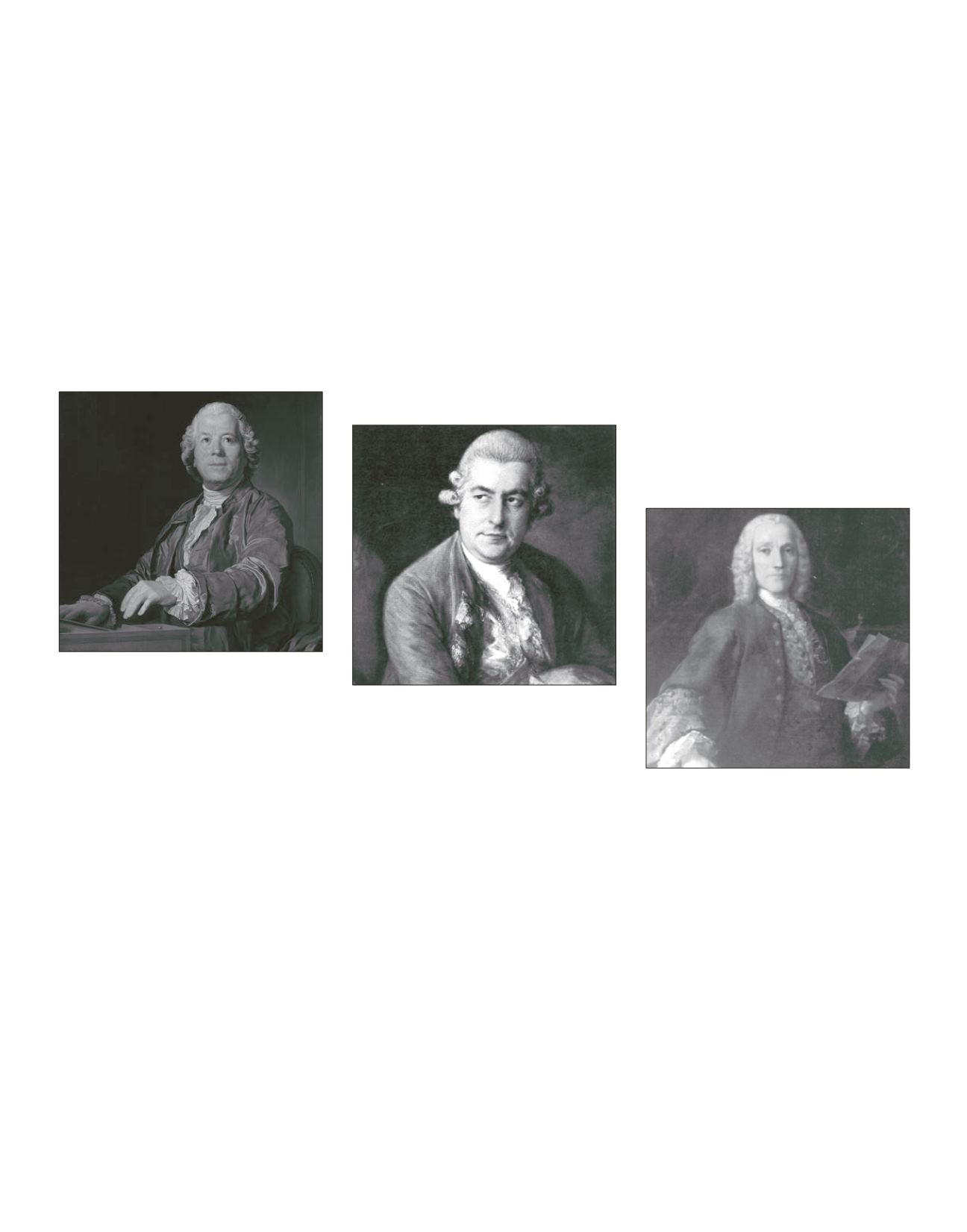
Gluck may be inaccurately represented in the
family letters. Young Wolfgang visited Vienna in
, presumably to participate in the wedding
celebrations of the Archduchess Maria Josepha
and King Ferdinand of Naples.
e bride’s un-
expected death and the subsequent period of
mourning temporarily halted all concert activ-
ity. Resumption of the city’s musical life brought
a new round of intrigue. Leopold Mozart ini-
tially reported on February that “I have won
Gluck over to our side.”
at presumed sup-
port dissolved, at least in the father’s suspicious
mind, with a planned production of Wolfgang’s
opera
La nta semplice
. Leopold accused “all
the composers, among whom Gluck is a leading
gure, [of undermining] everything in order to
prevent the success of this opera.”
e Mozarts
returned to Salzburg unsuccessful in their at-
tempt to mount a production.
Years later, Mozart and Gluck again crossed
paths in Vienna. Now a grown man and re-
nowned throughout Europe, Mozart settled in
the imperial capital in
and remained there
for the nal decade of his life. Past ills, if they ac-
tually existed, were forgotten. Gluck expressed
admiration for Mozart’s recent “Turkish Sing-
spiel”—
Die Entführung aus dem Serail
. “Gluck
paid me many compliments,” Mozart wrote to
his father on August ,
. “I shall dine at his
house tomorrow.”
Six months later, on March ,
, Mozart gave
a sold-out concert attended by the emperor. e
program featured a wide variety of his orches-
tral and vocal works. e pianist-composer also
treated the audience to several improvisations: a
fugue, six variations on “Salve tu, Domine” from
Giovanni Paisiello’s opera
I loso immaginarii
,
and ten variations on “Les hommes pieusement”
from Gluck’s
La rencontre imprévue
, a comic
“Turkish” opera premiered in Vienna in
.
Following Gluck’s death in
, Mozart was ap-
pointed his successor as imperial
Kammermu-
sicus
(a largely honorary position), at a greatly
reduced salary.
Piano Sonata No. in G major, .
h/
e young Mozart traveled throughout Europe
during the
s studying the various national
styles of composition. With his cosmopolitan
background, he had hoped to secure an appoint-
ment at one of the important musical centers
in Germany or Austria. Mozart’s status in his
native Salzburg was tenuous at best, and his at-
tempts to join the imperial court in Vienna were
unsuccessful. By the middle of the decade, Mo-
zart had developed a close association with Mu-
nich. He had been commissioned to compose an
opera for the Carnival season of
.
e rst
performance of that work,
La nta giardiniera
,
was to have taken place on December , but it
was postponed until January . During the in-
tervening weeks, Mozart and his father gave sev-
eral performances of sacred and instrumental
works. In addition, Mozart composed a set of six
keyboard sonatas during the early part of
.
e Sonata in G major, .
h/ , was the
h work in this earliest surviving collection of
piano sonatas by Mozart.
is composition in
three movements is written in a lighter,
galant
style that Mozart had learned from the works of
Johann Christian Bach; Mozart had made con-
certo arrangements of three of Bach’s keyboard
sonatas in
. e G-major rst movement is a
sonatina marked
Allegro
. A lyrical
Andante
son-
atina in C major follows. e
Presto
nale opens
in G major with a lilting / theme. A contrast-
ing idea in D major emerges a er a short pause
and explores a variety of keyboard textures.
DOMENICO SCARLATTI (1685–1757)
Eight sonatas
Domenico Scarlatti was a member of a large
family of musicians almost as proli c as the Ger-
man Bachs. He was the sixth of ten children of
Alessandro Scarlatti (
– ), the composer
of many operas, cantatas, and oratorios. Dome-
nico—an almost exact contemporary of Johann
Sebastian Bach ( – ) and George Frideric
Handel ( - )—became the most famous
of the Scarlatti children, especially for his more
than
keyboard sonatas; he also composed
operas, oratorios, cantatas, and other sacred vo-
cal works.
Alessandro guided his son’s early career. Do-
menico received his rst appointment in
as organist and composer at the royal chapel
in Naples, where Alessandro was the
maestro
di cappella
. Domenico’s rst compositions were
operas written during his years in Naples. On
his father’s insistence, he le Naples in
to
go to Venice, an important operatic center. Af-
ter four years, Scarlatti moved to Rome and held
several positions between
and
. Scarlat-
ti le his native Italy to assume responsibilities
at the patriarchal chapel in Lisbon, Portugal. In
addition, he was charged with the musical train-
ing of King John V’s children. e Infanta Maria
Barbara was a particularly gi ed keyboard play-
er, and it was for her that Scarlatti wrote many
sonatas. A er Maria Barbara’s marriage to the
Spanish Crown Prince Fernando in
, Scar-
latti moved to the Spanish court in Madrid, re-
maining there for the rest of his life.
Scarlatti’s keyboard sonatas are single-move-
ment works in the binary, or two-part, form
common to many Baroque dances. Each sonata
places di erent technical demands on the play-
er: rapid repeated notes, crossing of the hands,
fugal writing, sweeping parallel lines, and fast
arpeggios and scales, among others. Equally
innovative is Scarlatti’s use of unusual harmo-
nies, irregular phrases, and colorful, evocative
themes.
LUDWIG VAN BEETHOVEN (1770–1827)
Piano Sonata No. in F minor, op.
(“Appassionata”)
Beethoven devoted himself to composition with
renewed fervor a er realizing that his hearing
loss was irreversible. Profound despair led him
to dra a personal confession of his deafness
Christoph Willibald Gluck by Joseph Duplessis
(1775)
Johann Christian Bach by Thomas Gainsborough
(1776)
Domenico Scarlatti by Domingo Antonio Velasco
(1738)
R$9,1,$ 0$*$=,1( _ 6(PT(0%(R ɰ 6(PT(0%(R
100








